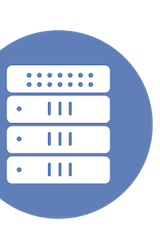|
|
This video is part of the appearance, “Microsoft Security Platform Demos“. It was recorded as part of Tech Field Day Exclusive with Microsoft Security at 8:00-9:00 on October 9, 2025.
Watch on YouTube
Watch on Vimeo
This presentation demonstrates the capabilities of Microsoft Sentinel’s evolution into a unified security platform, showcasing how a single console empowers security practitioners to manage and investigate threats across their entire digital estate. The core principle is that since “attackers think in graphs” and move across domains, defenders need a consolidated, cross-domain view. This is delivered through the Microsoft Defender console, which brings together tools for identity, endpoints, email, and cloud infrastructure. A key feature is the proactive exposure management capability, powered by the Sentinel Graph. It visualizes attack paths from internet-exposed assets to critical data, allowing teams to prioritize patching the most crucial vulnerabilities first, moving beyond simple vulnerability scanning to understanding true organizational risk.
For post-breach scenarios, the platform offers a unified incident queue that reduces alert fatigue by correlating alerts from both Microsoft and third-party sources into a single “Uber story.” When an incident occurs, the Sentinel Graph is used to stitch together the alerts into a coherent narrative and calculate the potential blast radius, showing analysts where an attacker could pivot next and helping them prioritize response actions. This graph-based approach also transforms threat hunting. While analysts can still run traditional Kusto Query Language (KQL) queries on recent data in the analytics tier, they can now also perform “posture hunting” directly on the graph to proactively find overprivileged access or risky configurations before they can be exploited.
These advanced capabilities are powered by the Sentinel Data Lake, which decouples storage and compute to allow for the cost-effective, long-term retention of high-volume data like syslogs and cloud trails. This data is stored in an open Delta Parquet format, enabling multiple forms of analysis on a single copy of the data. Analysts can run KQL queries for retro-hunts spanning years or perform deep, big-data analysis using Spark and Python directly within VS Code. This is further enhanced by AI, where the Sentinel MCP server and GitHub Copilot allow analysts to perform “vibe hunting.” They can use natural language to ask questions, discover relevant data tables in the lake, and even have the AI generate entire Python analysis notebooks, dramatically upskilling the entire SOC and making sophisticated data science accessible to every team member.
Personnel: Abhishek Agrawal








